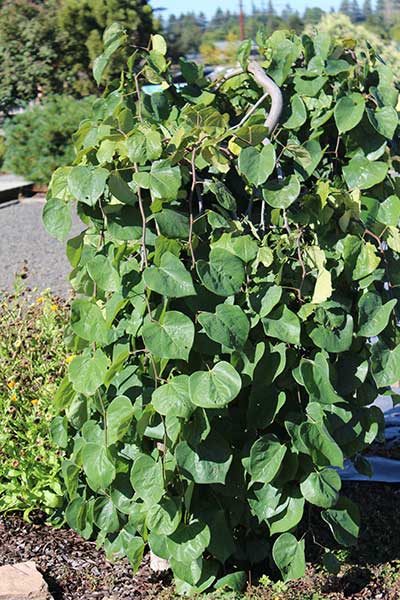Lavender Twist Weeping Redbud
- Scientific Name: Cercis canadensis 'Covey'
- Garden: Lawn Alternatives Garden
- Plant Type: Tree
- Evergreen/Deciduous: Deciduous
- Sun/Shade Exposure: Full Sun or Part Shade
- Moisture Requirements: Moist, Well-Drained
Plant Information
Redbuds are one of spring's eye-catchers when they're covered trunk to tips in flowers. Cute heart-shape leaves in green, purple or gold follow, adorning zig-zagging branches. Most redbuds are small upright trees with round canopies, but a few weeping cultivars exist as well. Characteristics: Members of the pea family, the genus consists of 7 species of shrubs and small trees. Small pea-flowers are white, pink or magenta; occur in clusters or short chains (racemes), usually on old wood in early spring. Leaves are heart-shape and can be green, gold, purple or variegated. Leathery seed pods resemble pea pods and occur in summer. Size: Shrub forms are multi-stemmed and grow 8-10’ x 8-10’. Tree forms range between 10’ at maturity to 25-30’. Weeping forms grow to 6-8’. Culture: Sun or part shade, adapts to many soil types, but cannot survive in a site that is permanently wet. Cercis grows better when planted in a spot that is not in a sprinkler zone during summer. In heavy clay soils, amend with compost & pumice to increase soil drainage. Provide deep watering, every 2 weeks in the first summer (if it gets really hot, say over 95 degrees, give an additional soaking before the heat comes). Cercis is drought tolerant once established. Problems: Susceptible to Verticillium wilt With insufficient soil drainage, trees can experience root rot. This is likely the leading cause of death of Cercis in Portland.
Data Source
https://www.portlandnursery.comPlant Photos







